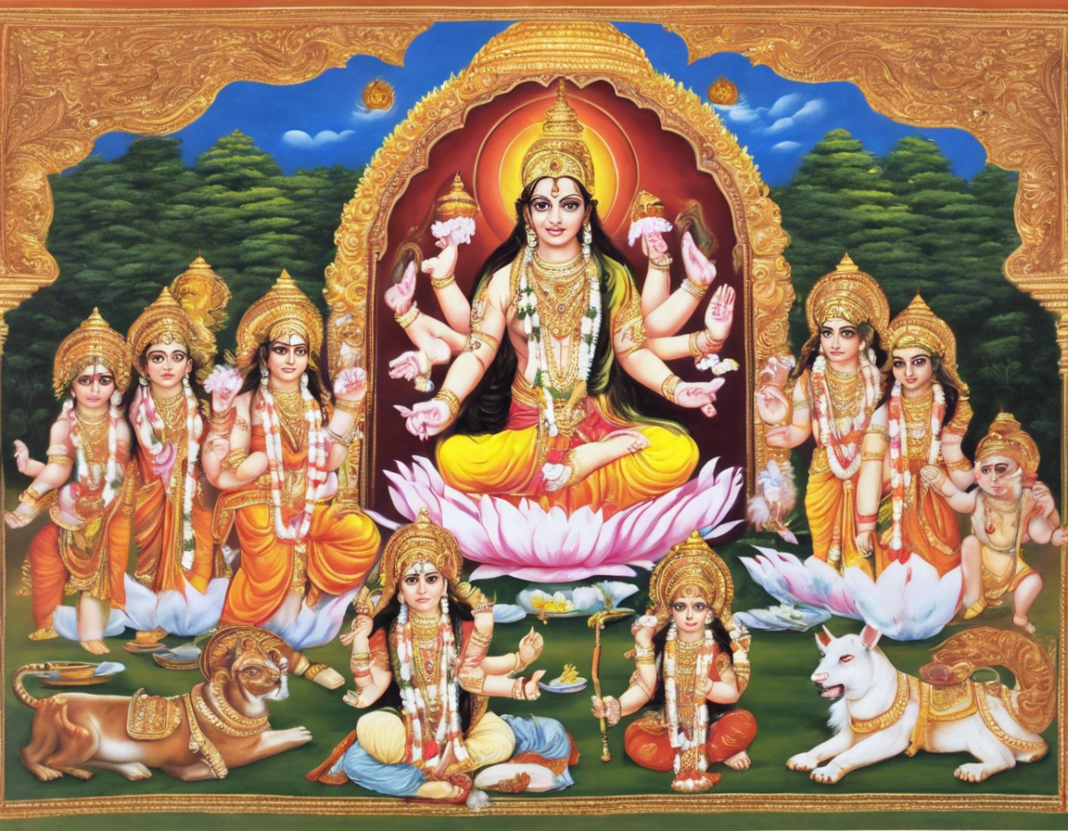Introduction
The Shiv Puran is one of the eighteen major Puranas, a genre of ancient Indian texts that narrate religious teachings and myths. Dedicated to Lord Shiva, the deity of destruction and transformation in Hinduism, the Shiv Puran imparts wisdom, spiritual guidance, and knowledge of cosmic truths. This sacred scripture is divided into seven Samhitas (books) and comprises thousands of verses elucidating various aspects of Shiva’s life, his divine manifestations, and the philosophy surrounding him. In this blog post, we embark on a journey through the fascinating realms of the Shiv Puran, delving into its significance, content, and themes.
Significance of the Shiv Puran
The Shiv Puran holds immense significance in Hindu mythology and spirituality. It is revered as a divine scripture that not only glorifies Lord Shiva but also illustrates his role in the creation, preservation, and dissolution of the universe. Through its narratives, the Shiv Puran elucidates the paramount importance of devotion, righteousness, and renunciation in one’s spiritual journey. Moreover, it expounds on the mysteries of life and death, karma, and the ultimate goal of attaining liberation (moksha).
Content and Structure
The Shiv Puran is structured into seven books, each known as a Samhita, namely:
-
**Vidyesvara Samhita: This section deals with the glorification of Lord Shiva, emphasizing his supremacy among the Hindu trinity.
-
Rudra Samhita: It comprises stories of creation, cosmology, and the emergence of various deities and demons.
-
Shatrudra Samhita: This book primarily focuses on the destruction caused by Lord Shiva to maintain cosmic balance.
-
Kotirudra Samhita: It delves into the significance of rituals, prayers, and worship dedicated to Lord Shiva.
-
Uma Samhita: This section narrates the tales of Shiva’s consort, Goddess Parvati, and their divine union.
-
Kailasa Samhita: It highlights the sacredness of Mount Kailash, the abode of Lord Shiva, and its spiritual symbolism.
-
Vayaviya Samhita: This final book elucidates various aspects of dharma (righteousness), yoga, and the path to spiritual liberation.
Themes in the Shiv Puran
The Shiv Puran encapsulates a plethora of themes that offer profound insights into Hindu philosophy and spirituality. Some prominent themes found in this scripture are:
-
The Glory of Lord Shiva: The Shiv Puran extols the supremacy and benevolence of Lord Shiva, portraying him as the ultimate deity worthy of reverence and worship.
-
Destruction and Regeneration: Lord Shiva’s role as the destroyer of the universe and the subsequent process of regeneration are recurrent motifs in the Shiv Puran, symbolizing the cyclical nature of existence.
-
Divine Consort: The sacred bond between Lord Shiva and Goddess Parvati exemplifies the union of masculine and feminine energies in the cosmic scheme of creation.
-
Cosmology and Creation: Through intricate narratives, the Shiv Puran elucidates the origin of the universe, the cycle of creation and dissolution, and the cosmic order upheld by Lord Shiva.
-
Spiritual Practices: The scripture advocates devotion, meditation, austerities, and righteous conduct as essential components of one’s spiritual evolution and journey towards self-realization.
Frequently Asked Questions (FAQs)
-
What is the significance of reading the Shiv Puran?
Reading the Shiv Puran not only imparts divine knowledge and spiritual insights but also fosters a deeper connection with Lord Shiva, facilitating spiritual growth and inner transformation. -
Are there any specific rituals associated with studying the Shiv Puran?
While there are no rigid rituals prescribed for reading the Shiv Puran, it is advisable to maintain purity of mind and body, light incense, and offer prayers to Lord Shiva before delving into its sacred verses. -
Can non-Hindus benefit from studying the Shiv Puran?
Yes, the teachings and stories found in the Shiv Puran transcend religious barriers and offer universal wisdom that can resonate with individuals of all faiths, fostering spiritual enrichment and broadening one’s perspective. -
What is the connection between Lord Shiva and yoga as depicted in the Shiv Puran?
The Shiv Puran elucidates the profound relationship between Lord Shiva and yoga, portraying Shiva as the primary yogi who embodies the essence of spiritual discipline, meditation, and self-realization. -
How does the Shiv Puran address the concept of karma and its implications?
The Shiv Puran expounds on the law of karma, emphasizing the unwavering effects of one’s actions and the importance of leading a righteous life to mitigate negative consequences and pave the way for spiritual evolution.
In conclusion, the Shiv Puran stands as a reservoir of esoteric wisdom, divine teachings, and mythological narratives that continue to inspire and enlighten seekers on the path of spirituality. By exploring the depths of this sacred scripture, one can unravel the mysteries of existence, delve into the realms of the divine, and embark on a transformative journey towards self-realization and spiritual fulfillment.

